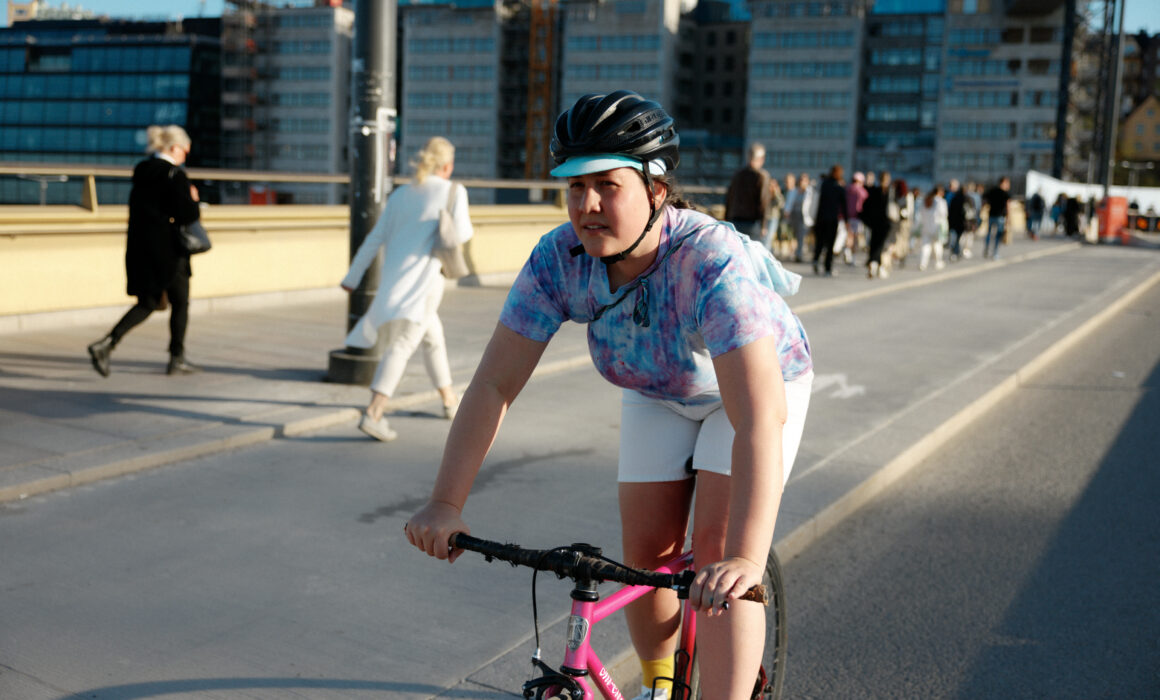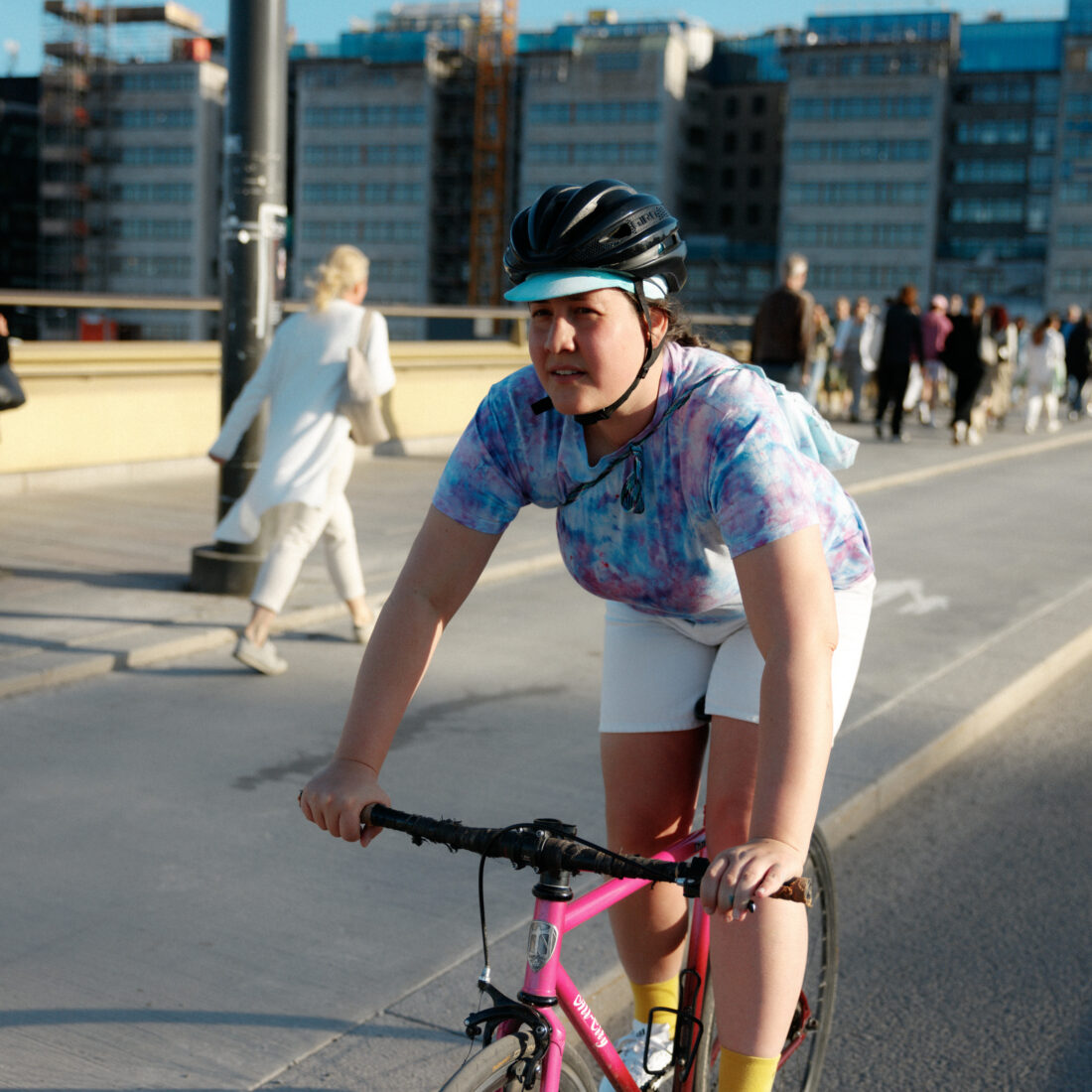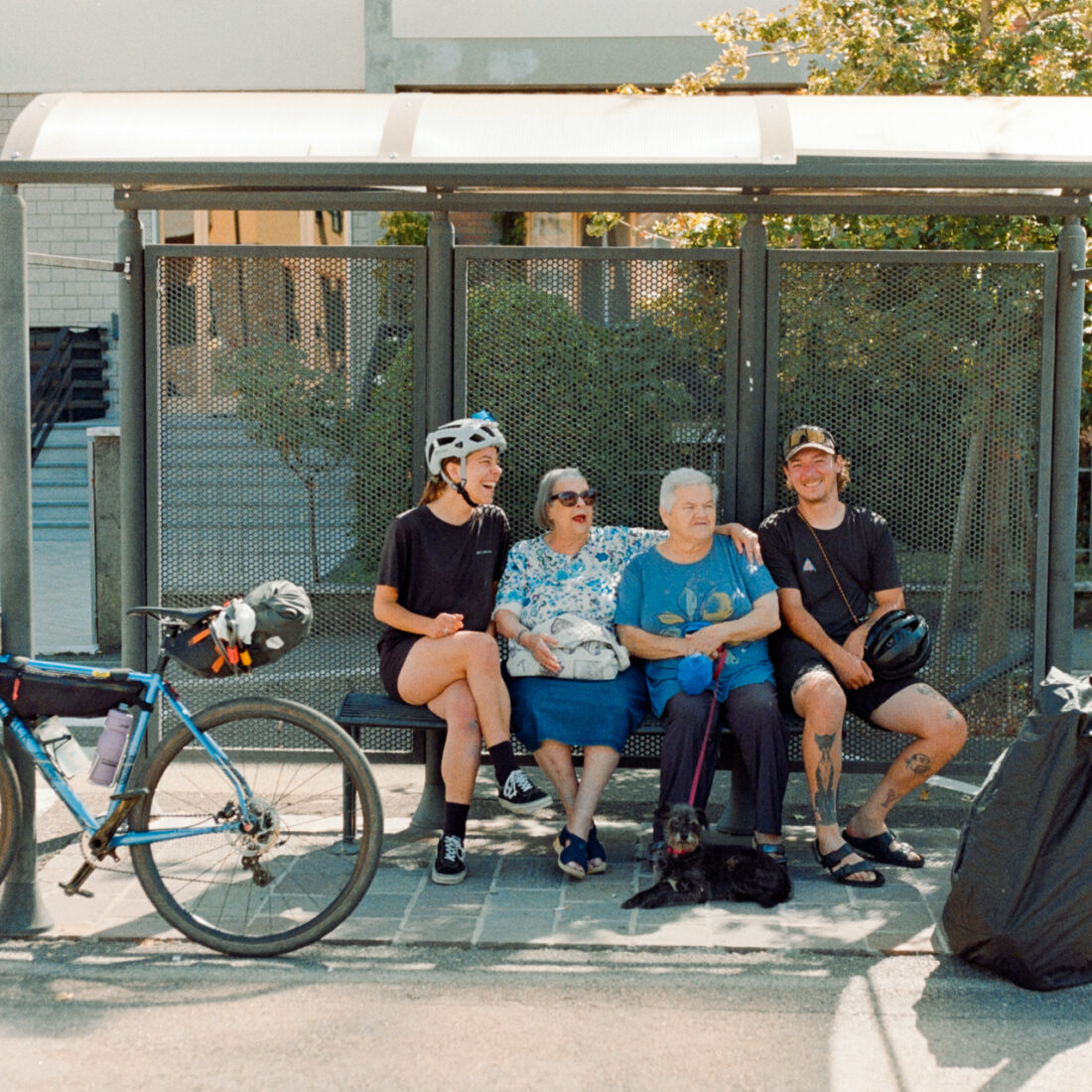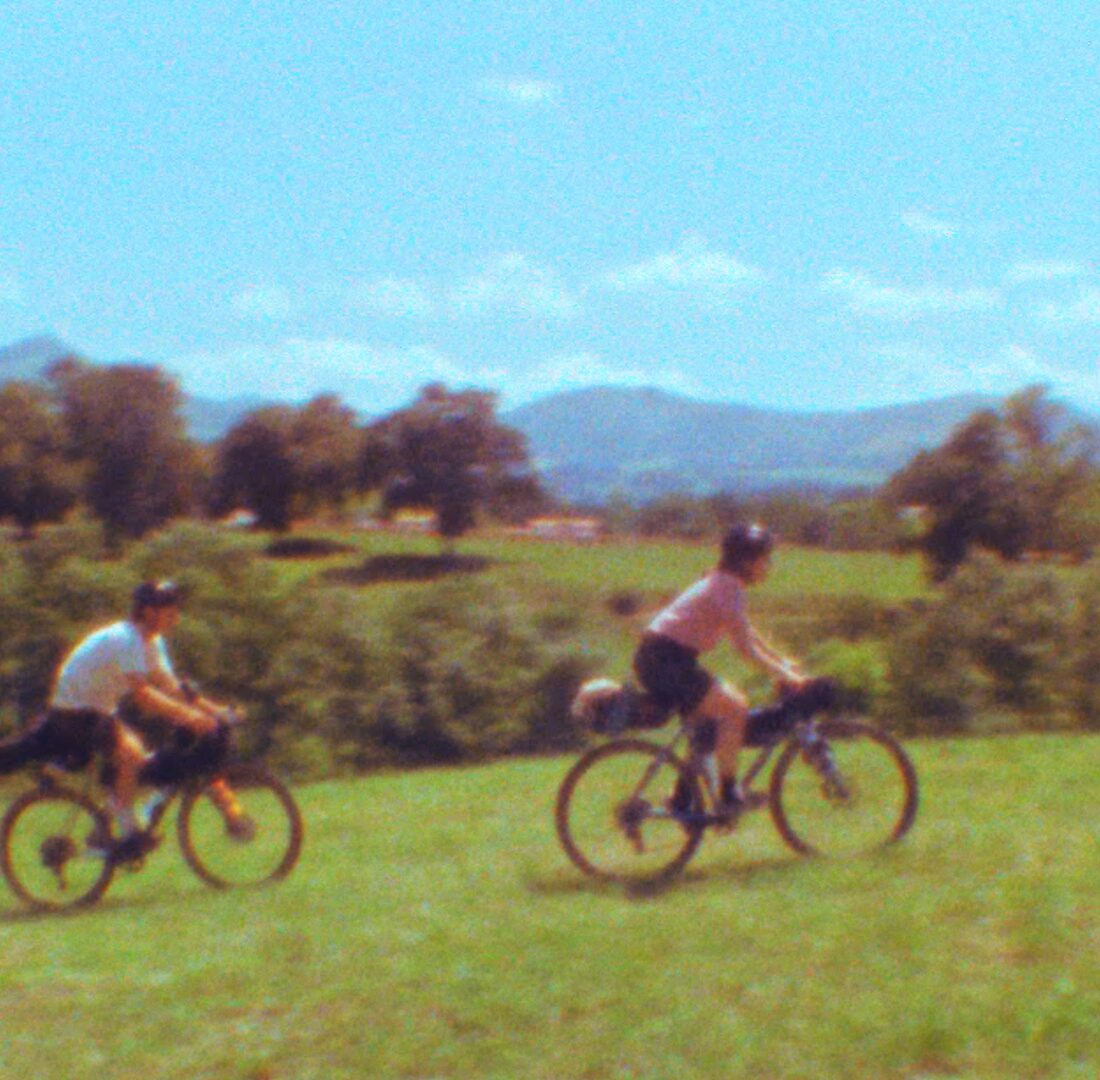In Stockholm with Lorenza Walker
In Stockholm with Lorenza Walker
Text & photos – Jean-Baptiste Delorme
I first met Lorenza when she came to visit France in October 2022. She is a Swedish American cyclist based in Stockholm and an artist with a diverse background, including mural art, illustration, graphic design, and textile work.
She started cycling as a bike messenger when she was studying at university and quickly got into bikepacking, and even completed the Trans Continental Race in 2019. But since the pandemic, she realized that she wanted to focus more on her creative projects rather than racing, particularly experimenting with dyeing fabric and garments, an art she has been exploring for the last few years, using a process called Ice Dyeing.
Last May, she invited me to Stockholm for a week to show me the city and I had the opportunity to watch and photograph her dyeing process in the little kitchen workspace of her apartment, where all the magic happens.
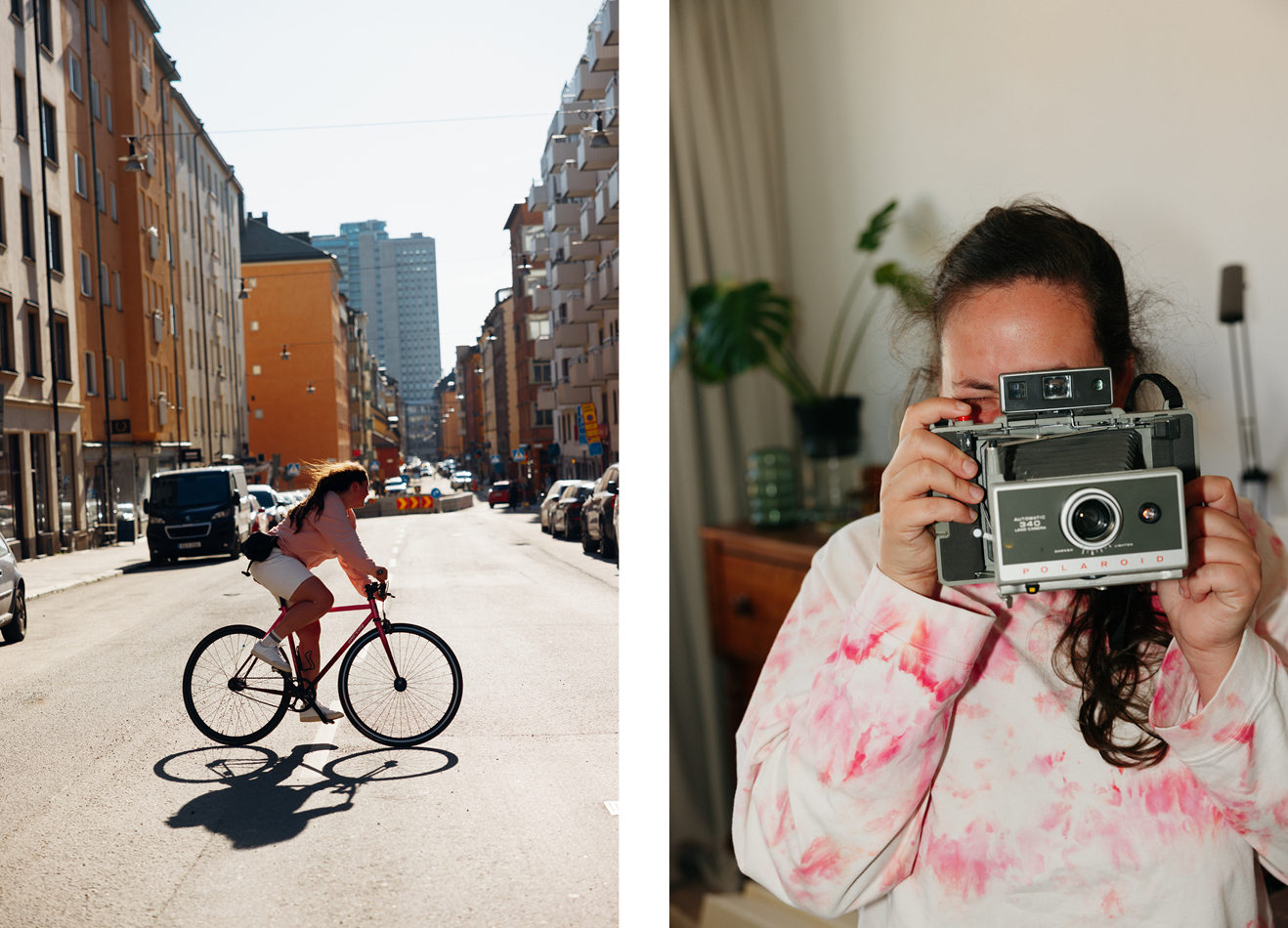
“Now I just want to meet people through cycling and focus more on creativity. It’s become so much more than just racing or pushing my limits, even if I really liked it.”
– How she feels after racing the 2019 Trans Continental Race.
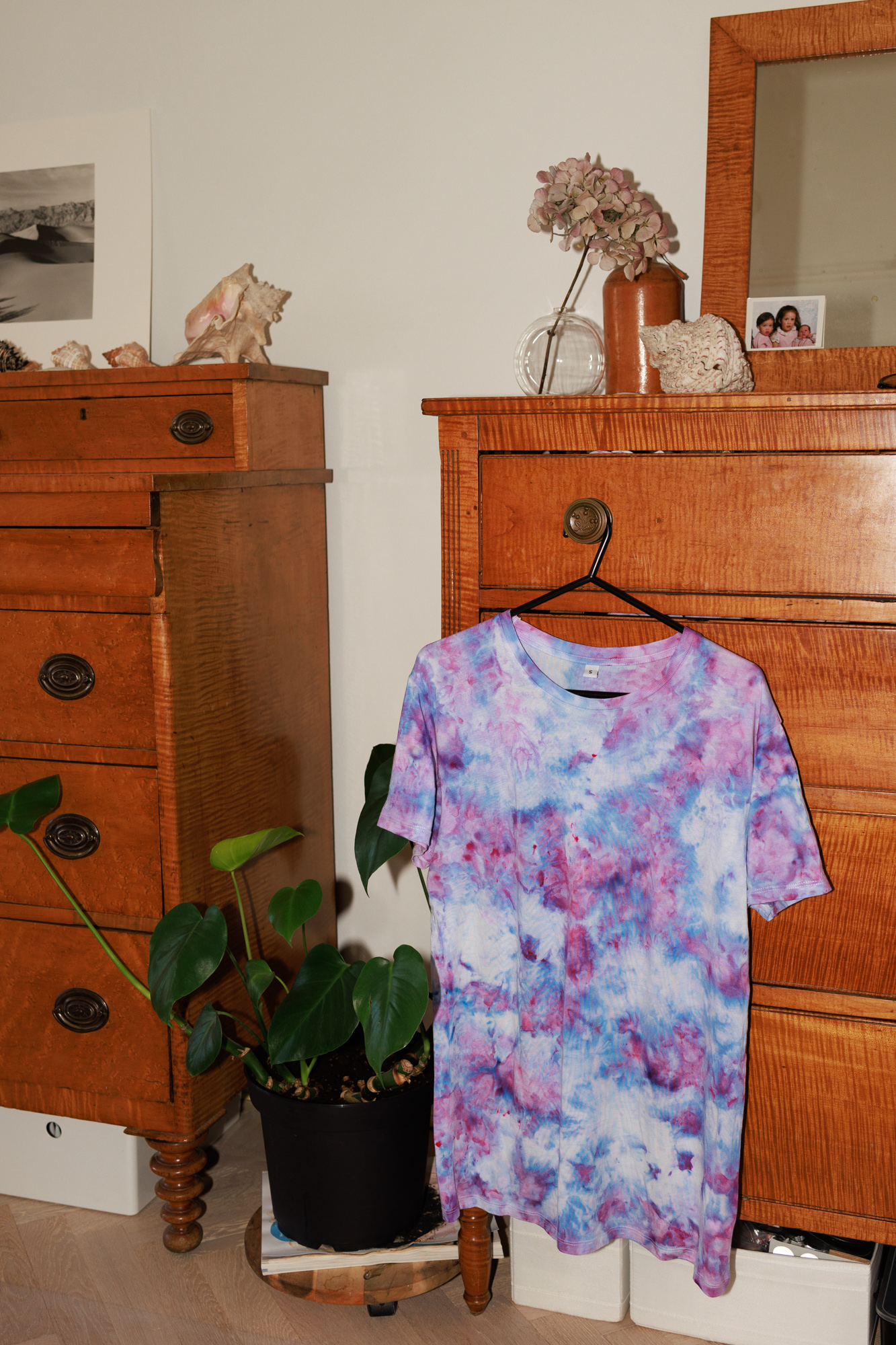
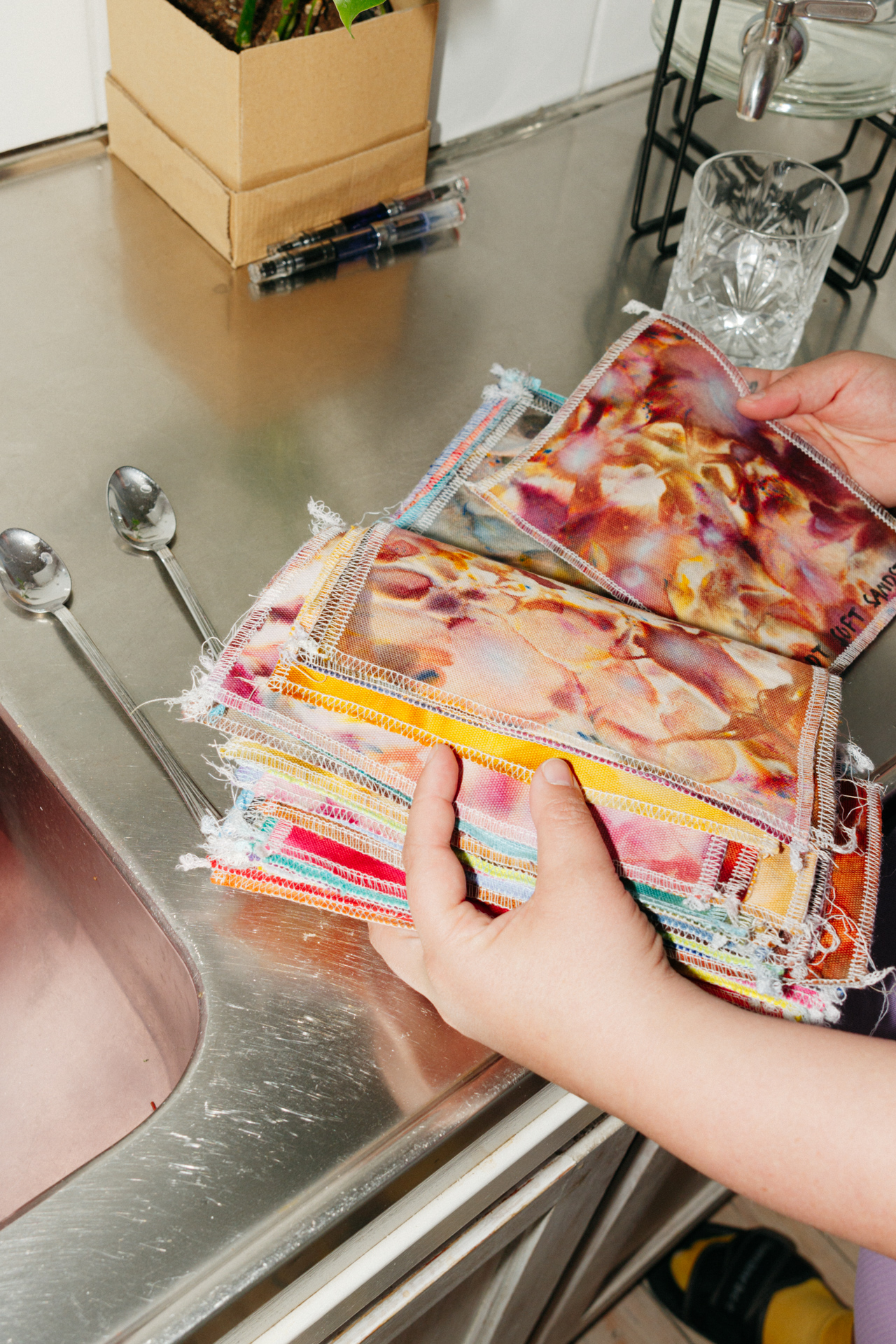
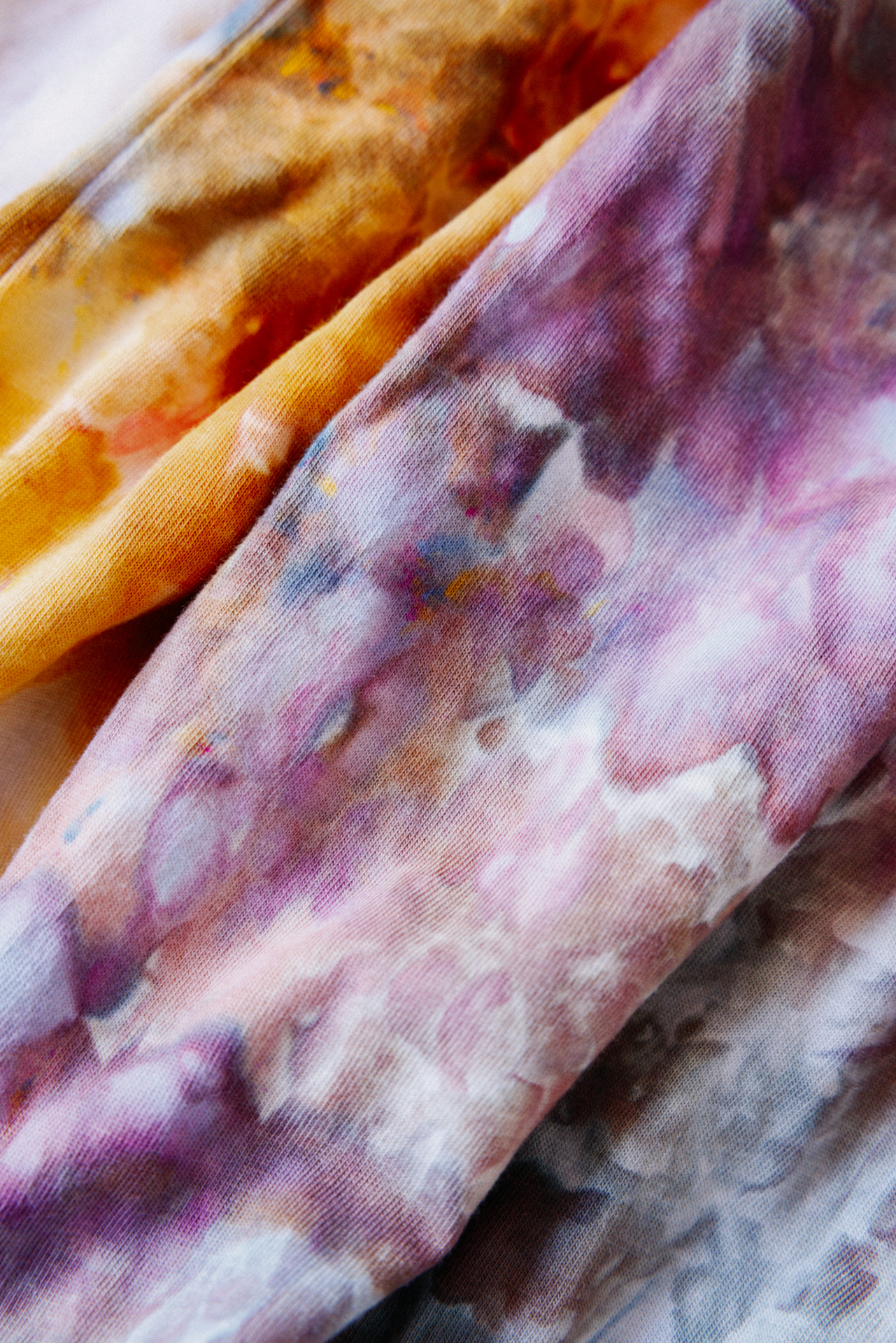
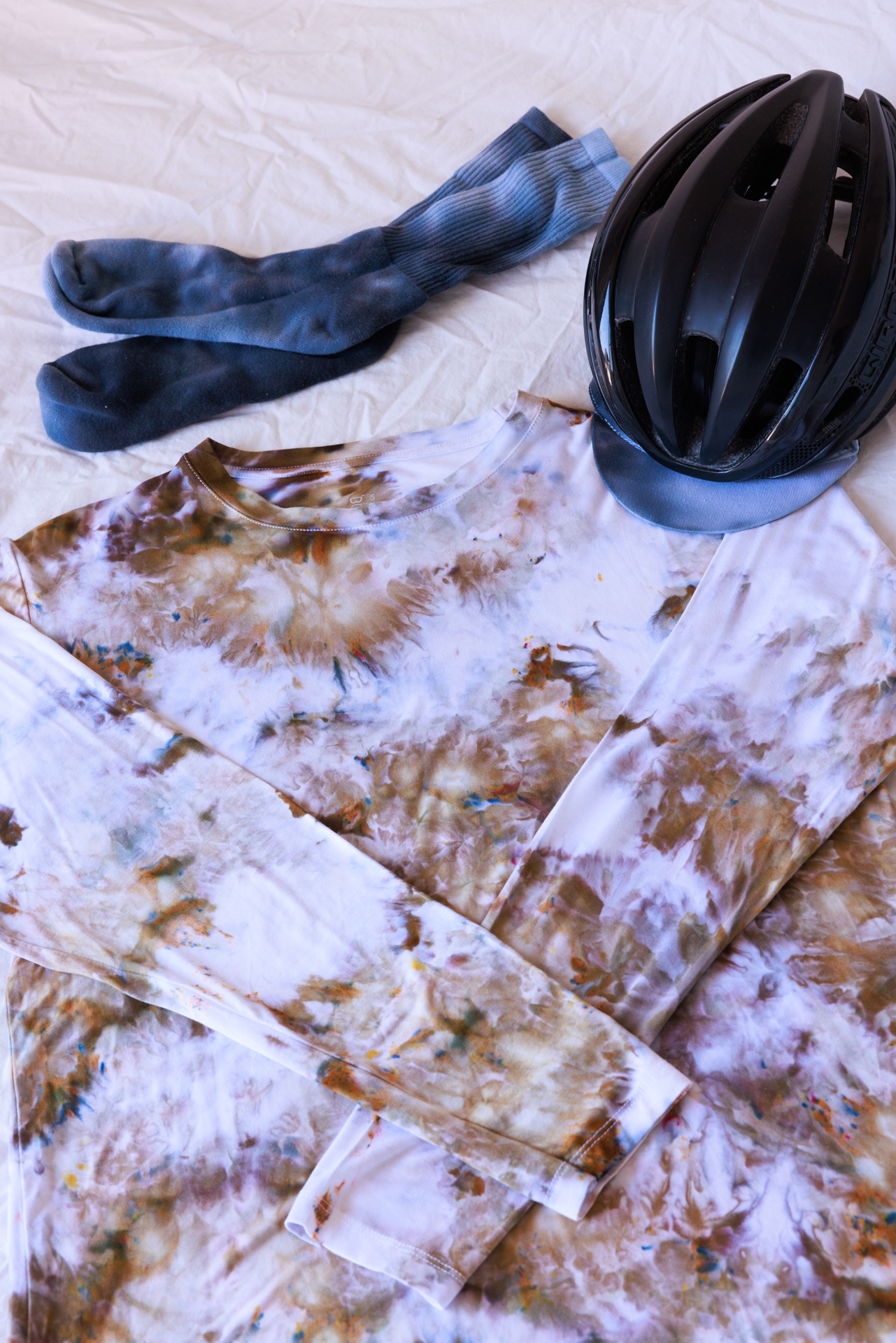
First, can you explain what exactly is Ice Dyeing?
Ice dyeing is a textile dyeing technique that creates unique watercolor-like effects, by covering the fabric with ice and then sprinkling cold reactive powdered dye on the ice. As the ice melts, the dye is slowly carried through the fabric, creating beautifully unpredictable patterns.
How did you learn about this technique?
I started dyeing regular clothes in the beginning, only because I had seen someone ice dye on Instagram, and I thought it was the most amazing thing I had ever seen. I really wanted to try it, so I did a bunch of research and got all the pigments and equipment that I needed, and I just fell in love with that way of dyeing. Over time, I realized that maybe I could dye my own cycling wear and sew it as well, so I just tried it. I found natural fibers, like bamboo and ecovero, that are really good for sports and it just opened up a new world to me.
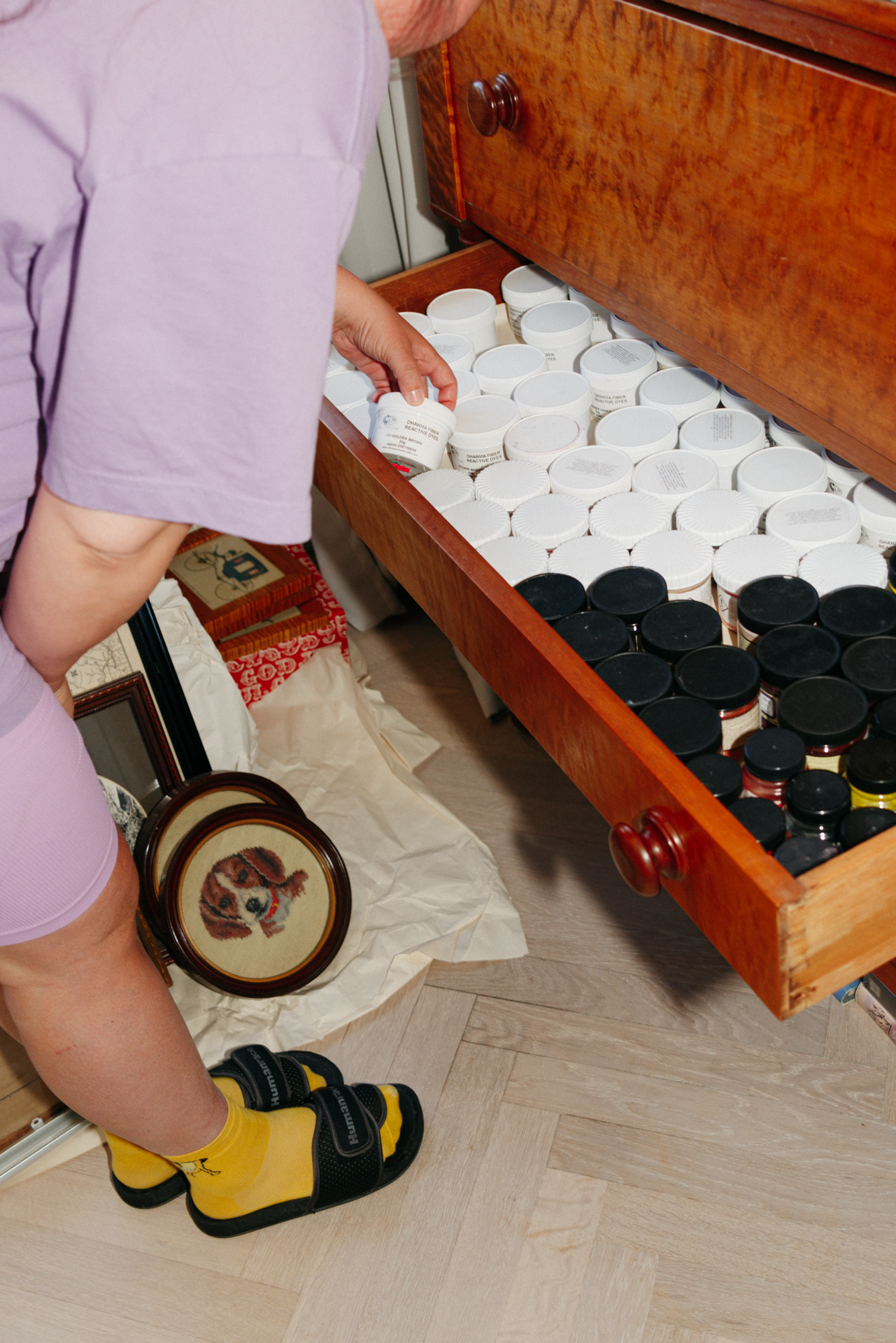
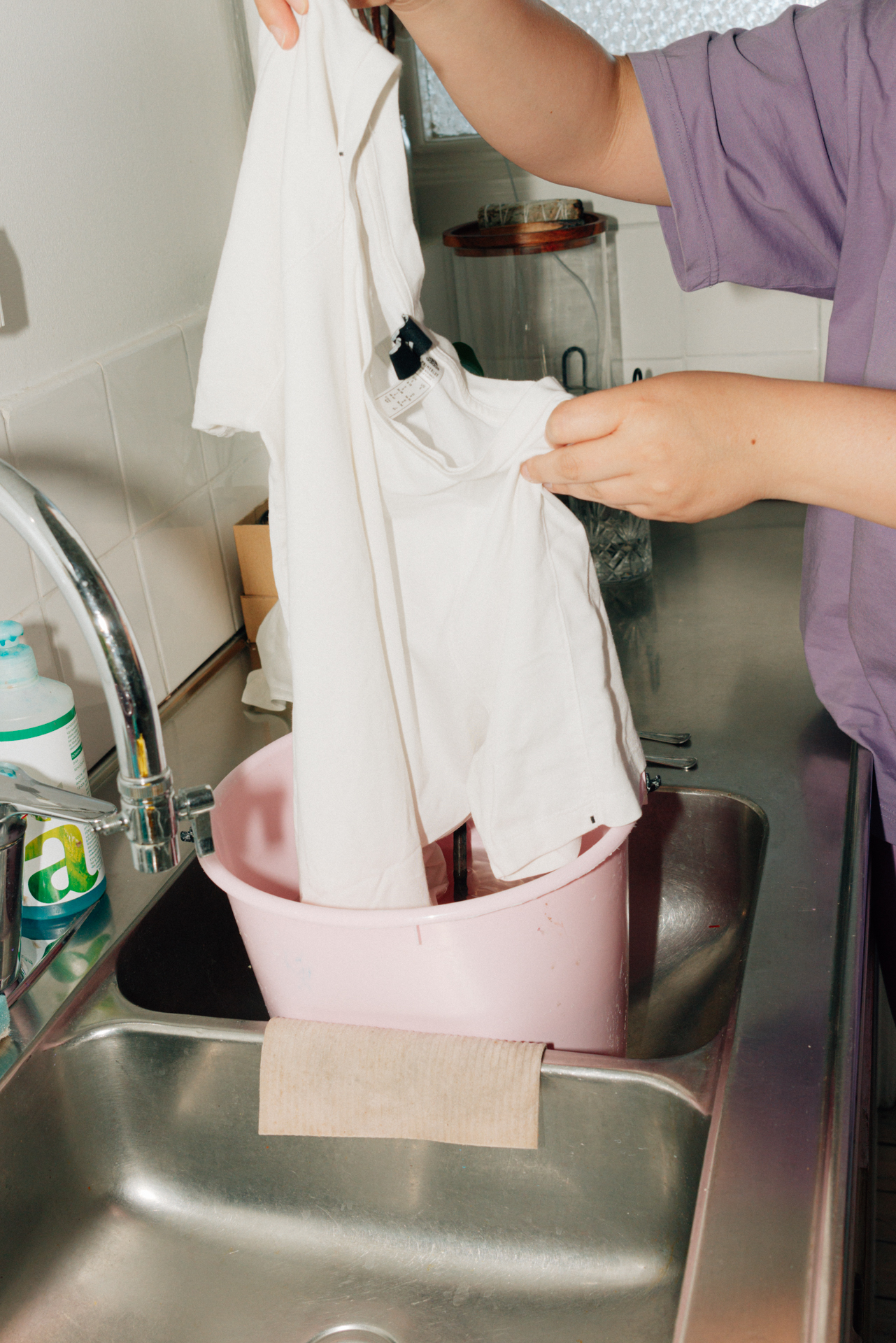
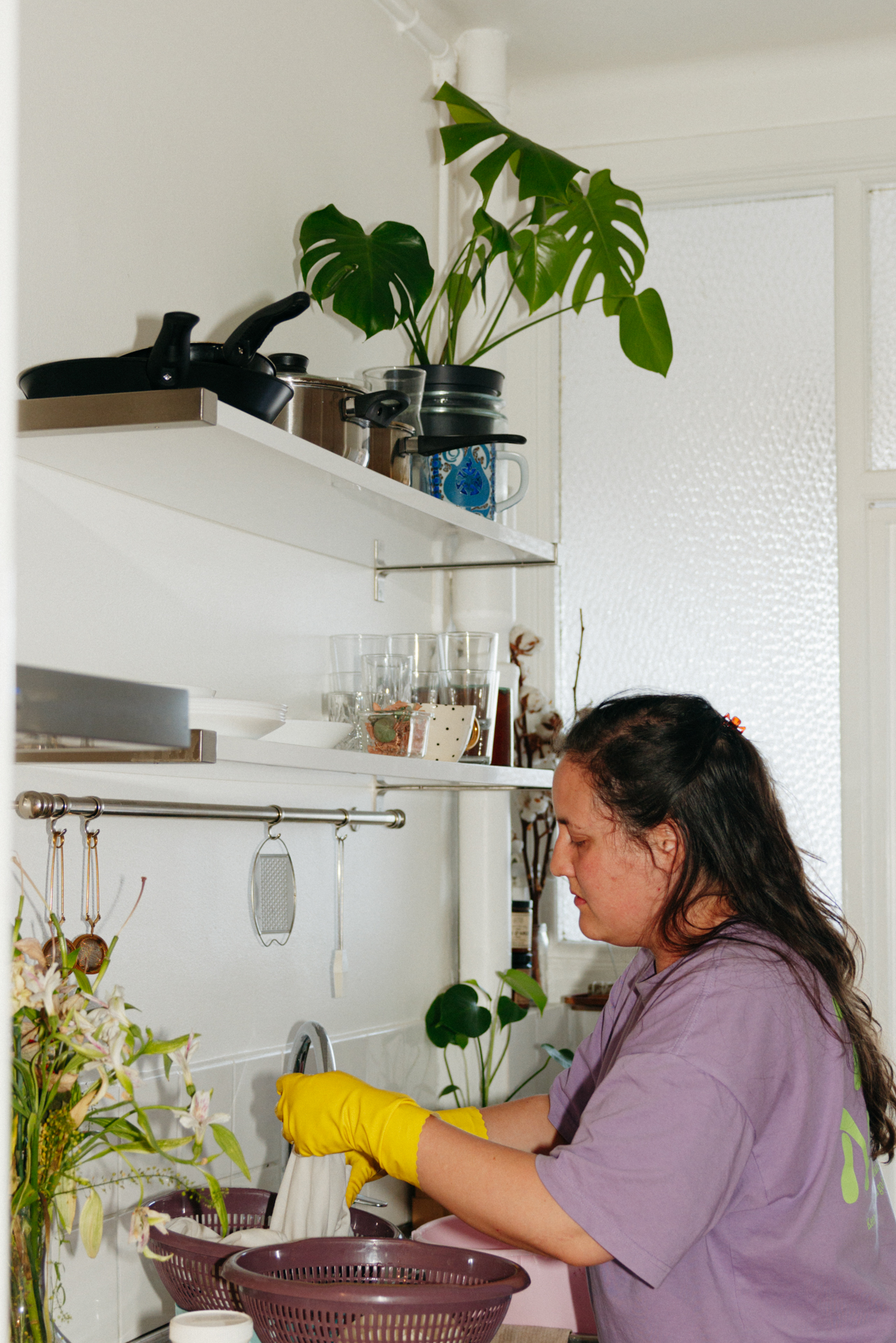
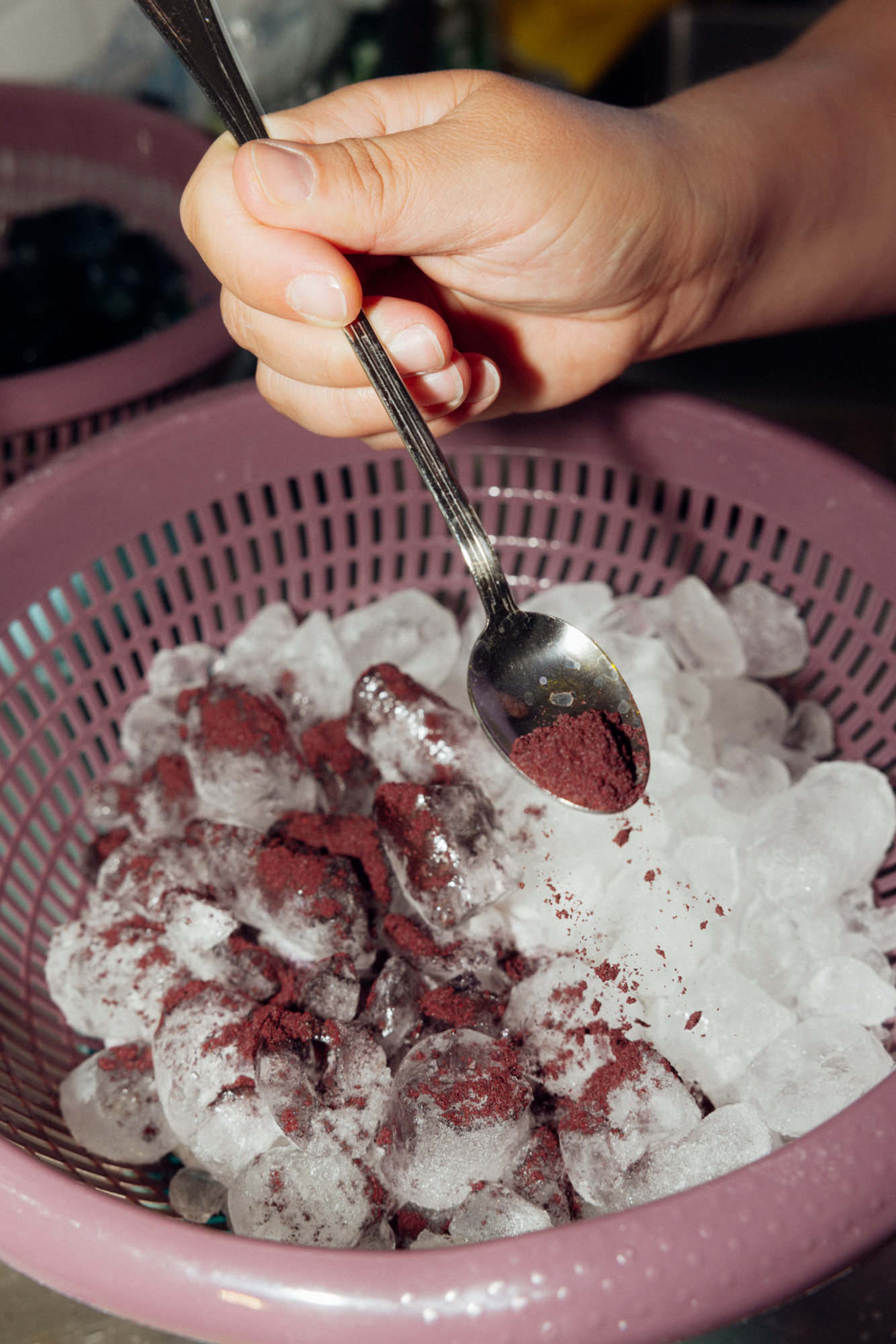
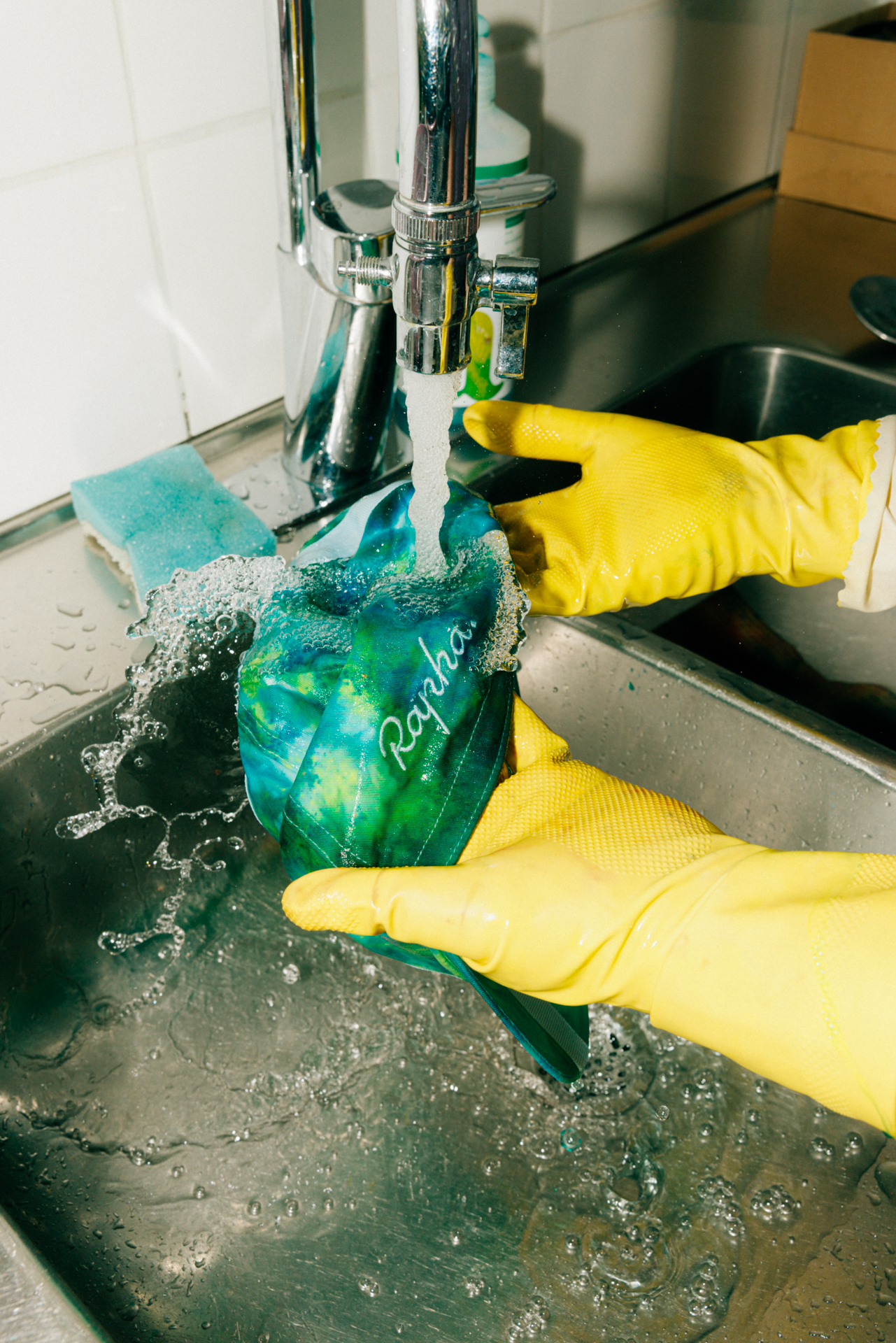
What was your approach when you started making your own clothes?
I think it’s more of a self-expression process that I want people to follow along with my color combinations or feel like they can see themselves in it, whether it’s a black dye shirt or one with all the colors in the world and these crazy patterns. I feel like we all can easily get put in a box because that’s often what you get from the cycling industry. Sometimes it feels boring to me or too expensive, so I just want to bring something different and also show some nice fabrics that are natural. I just love to create and spend my time on it.
Watching your dyeing process was amazing, it seemed like you were cooking something in your kitchen. Was your approach completely experimental in the beginning?
I experimented in my own way because I didn’t want to ask someone for their magic technique. I understand that they probably spent hours creating their own, and I also needed to find my own style, color combinations, and figure out how to achieve a particular aesthetic. I really appreciate the fact that I can’t completely control the process, it humbles my perfectionist mind.
How do you feel about working from your apartment?
I would say it’s convenient to a point because I can keep costs down by not having an additional space, and I can go out of bed and just start doing it. But I think if my production were to increase, then I would probably need a dedicated space. Partially because of what happened yesterday when you shot the photos of me dyeing, and the bucket full of ice and dye flew from the table all over my really white bedroom because of the wind. (laughs) It just never usually happens, but that’s definitely one of the limits.
“From my little kitchen to someone who is going to use it, that’s so cool!”
– on selling her clothing to different parts of the world
At what point did you decide to sell your clothing?
I thought about that pretty early on. I could buy a bunch of shirts and sell them while experimenting with new designs for each piece. This was right during the pandemic, when the whole Tie and Dye trend was happening. So, I felt like it was a good time to just do it. I first started selling through local markets, art markets, and flea markets, and now on my website as well. The last commission I had was for a gravel cycling club in Lausanne, Switzerland, which was really cool to do. I have now sold shirts in different parts of Europe and also in the US, which is amazing! From my little kitchen to someone who is going to use it, that’s so cool!
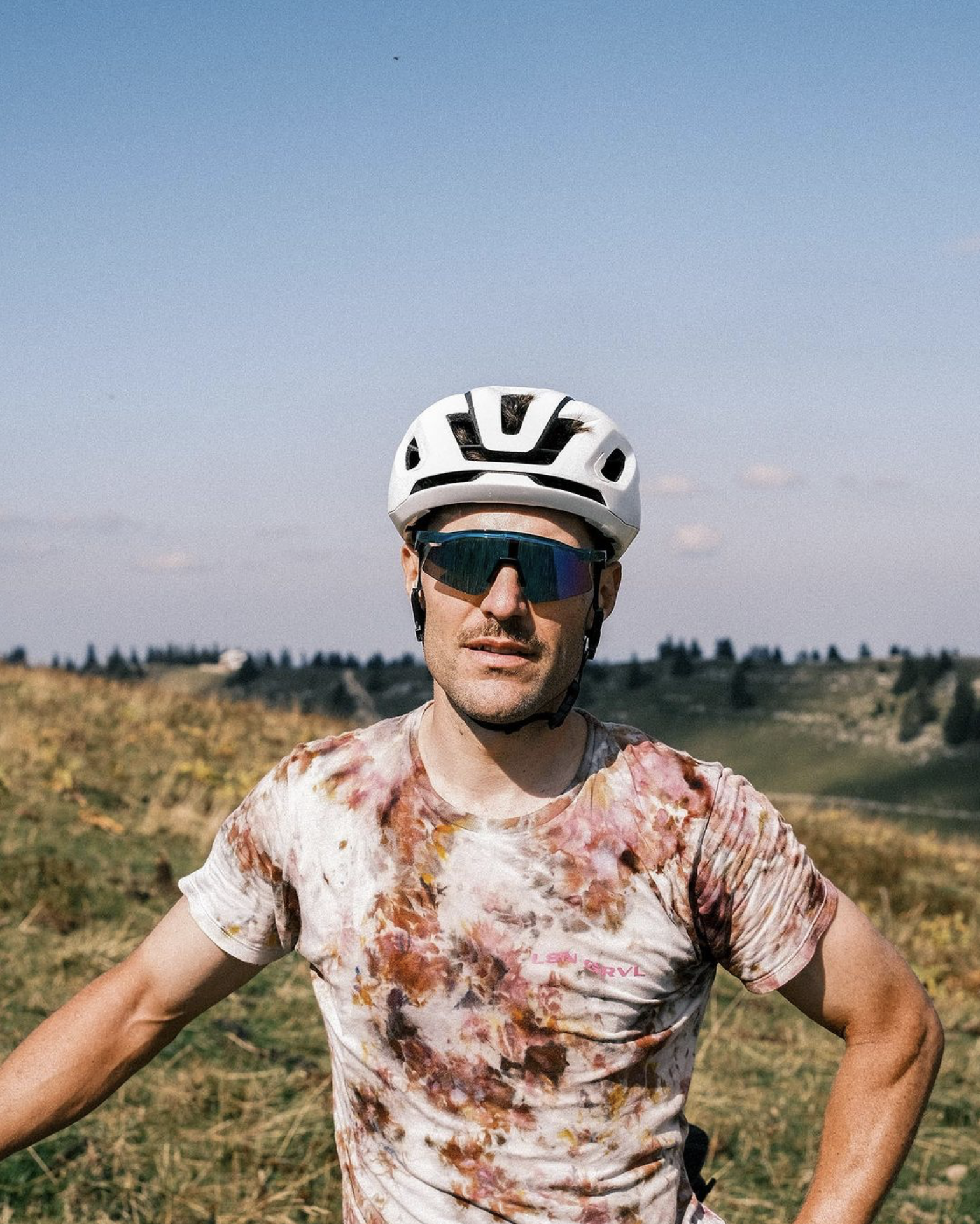
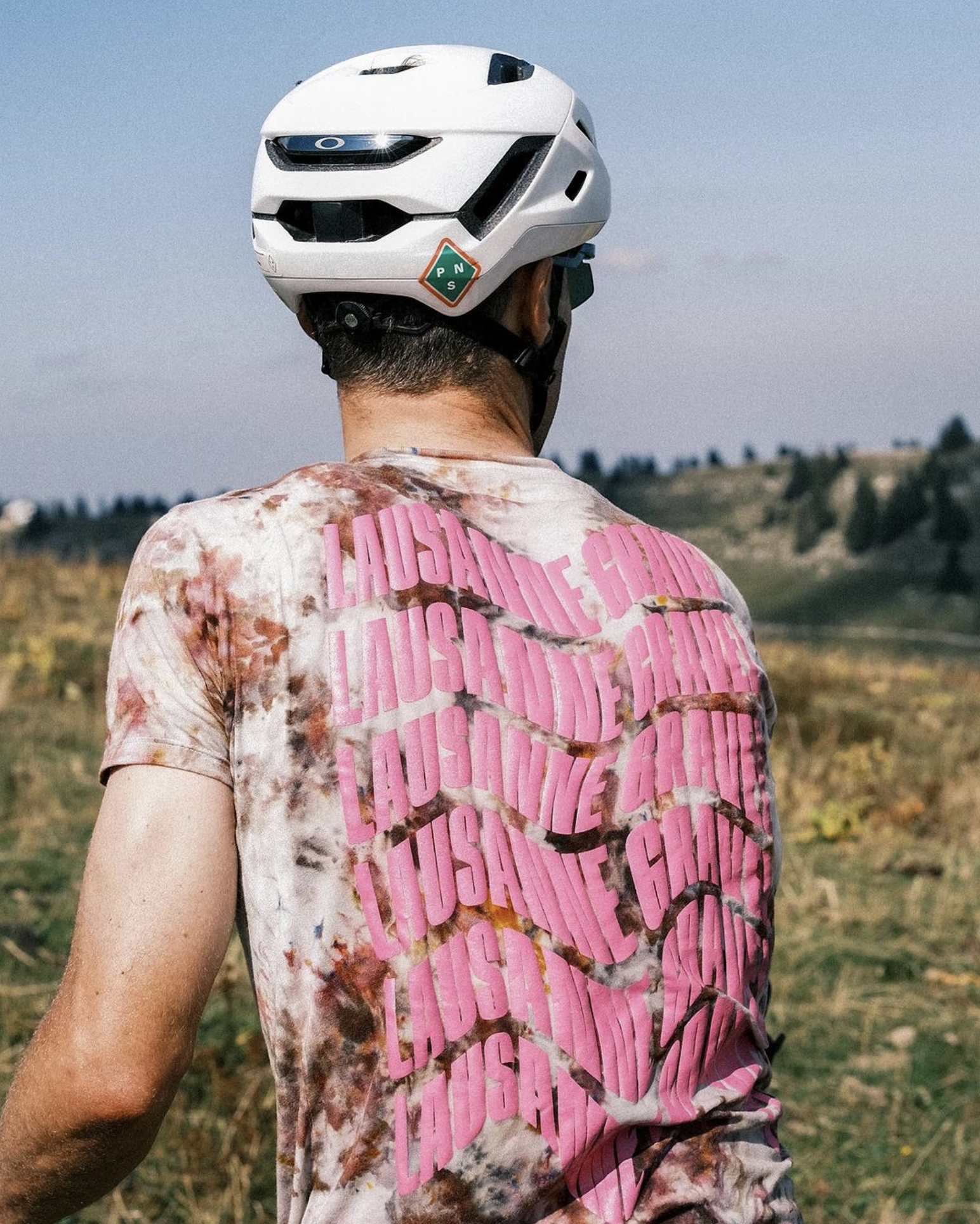
Ice dyed T-shirt for Lausanne Gravel · Photo – Jimbo Safi
Last question, how would you describe Stockholm as a place to ride? How is the cycling scene here?
I wouldn’t say that cycling is a huge sport here, the majority of cyclists here are commuters, they are not necessarily into it as a sport, but that’s just my opinion. We have a small mountain bike community because there are tons of trails and so much woods! Also the gravel community is definitely growing. I would say a typical ride with friends here starts by meeting at a cafe and having a bun. Then we head to the south of Stockholm where there are a lot of gravel paths and lakes. If it’s a shorter ride, we would go through some national parks, otherwise, we would take the train out a little bit from the city to explore these beautiful remote places, and finally we would end the ride with a hamburger!
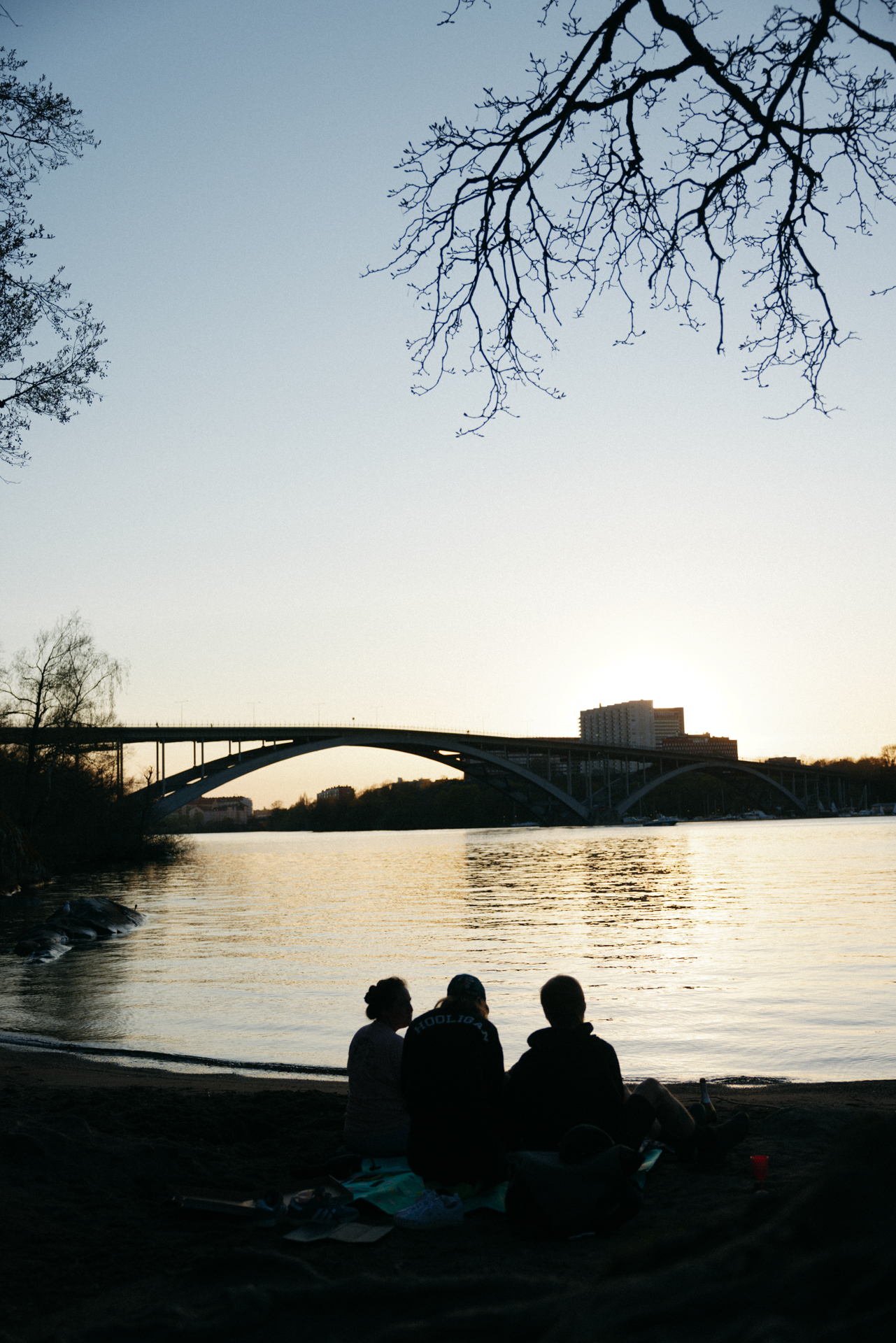
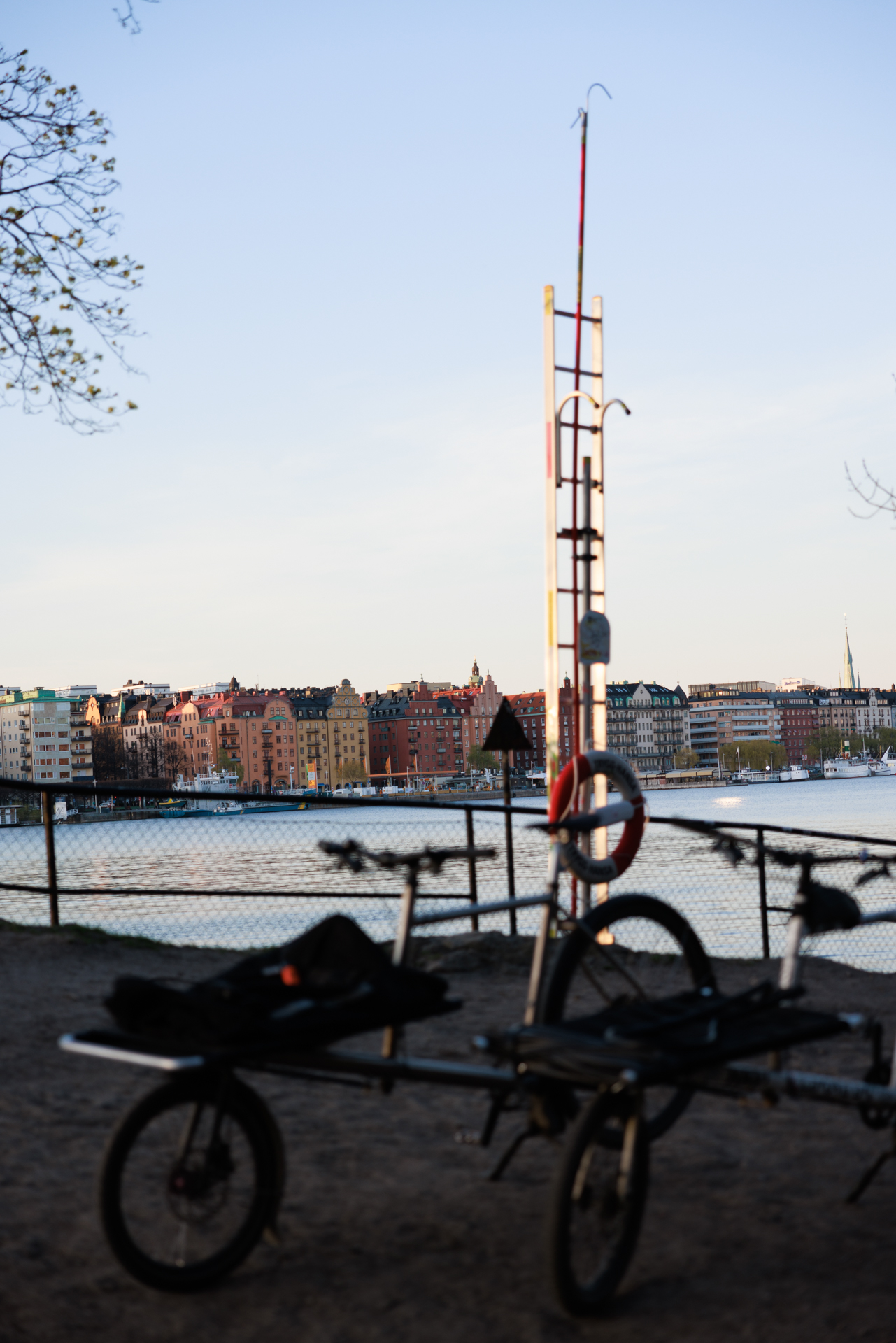
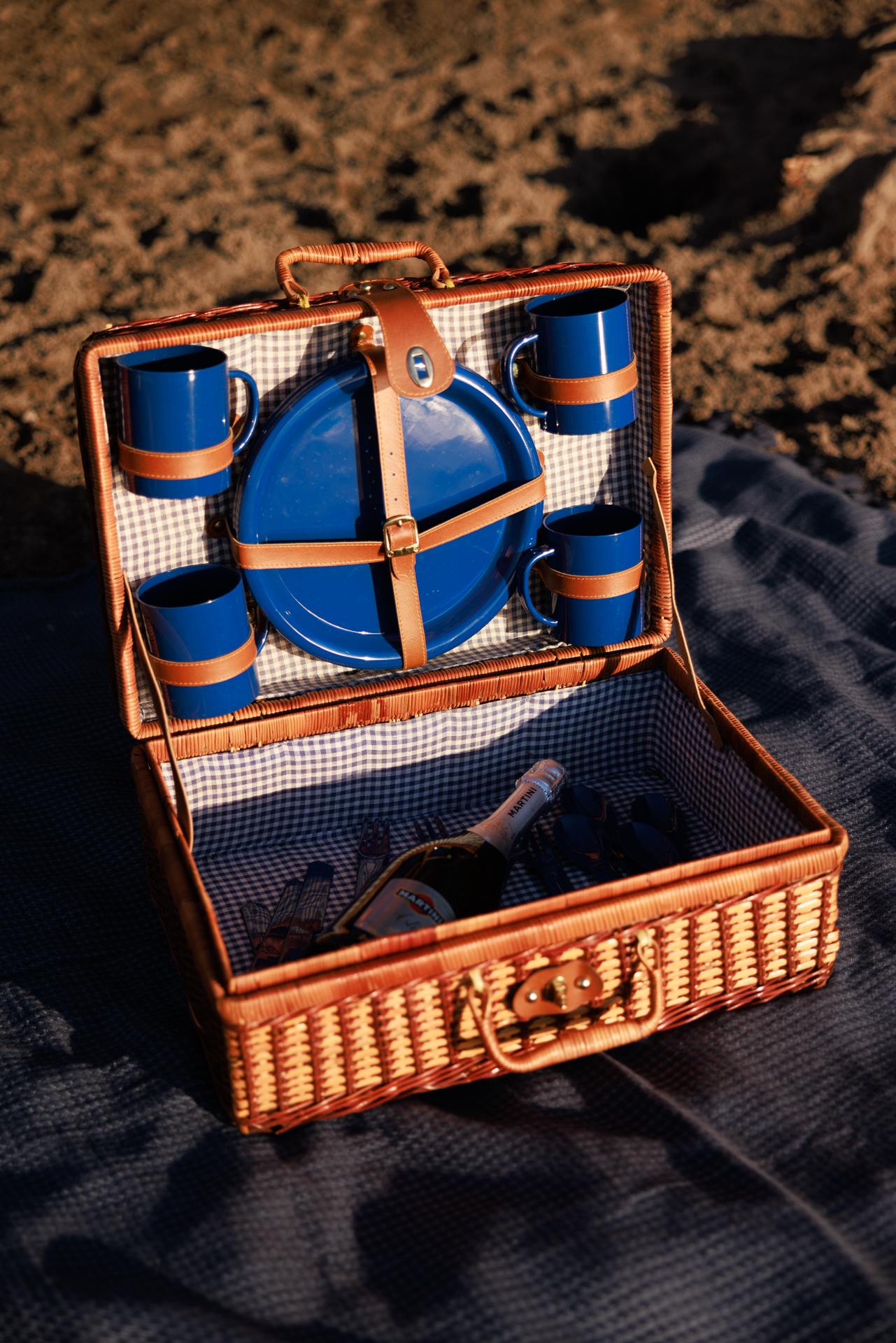
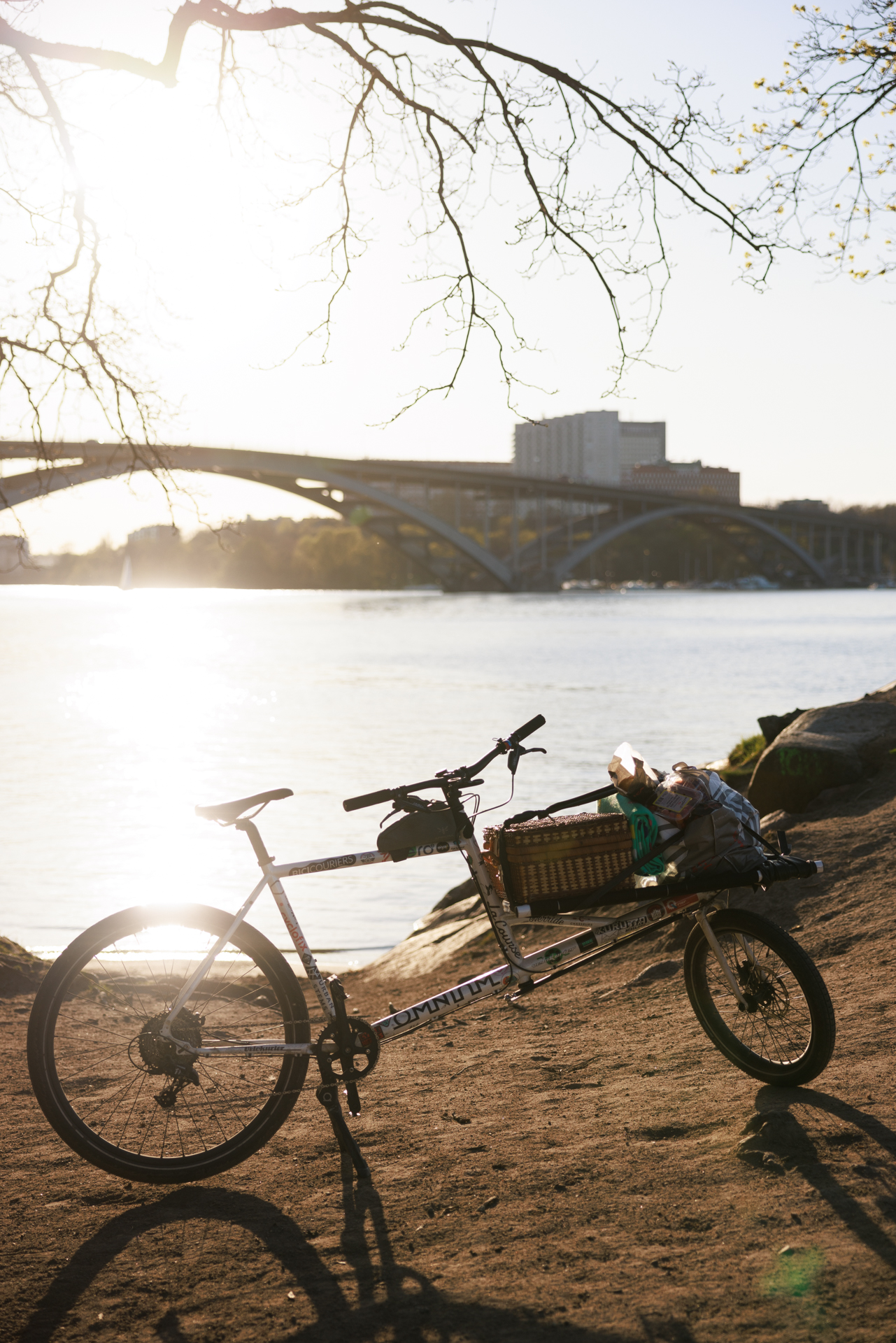
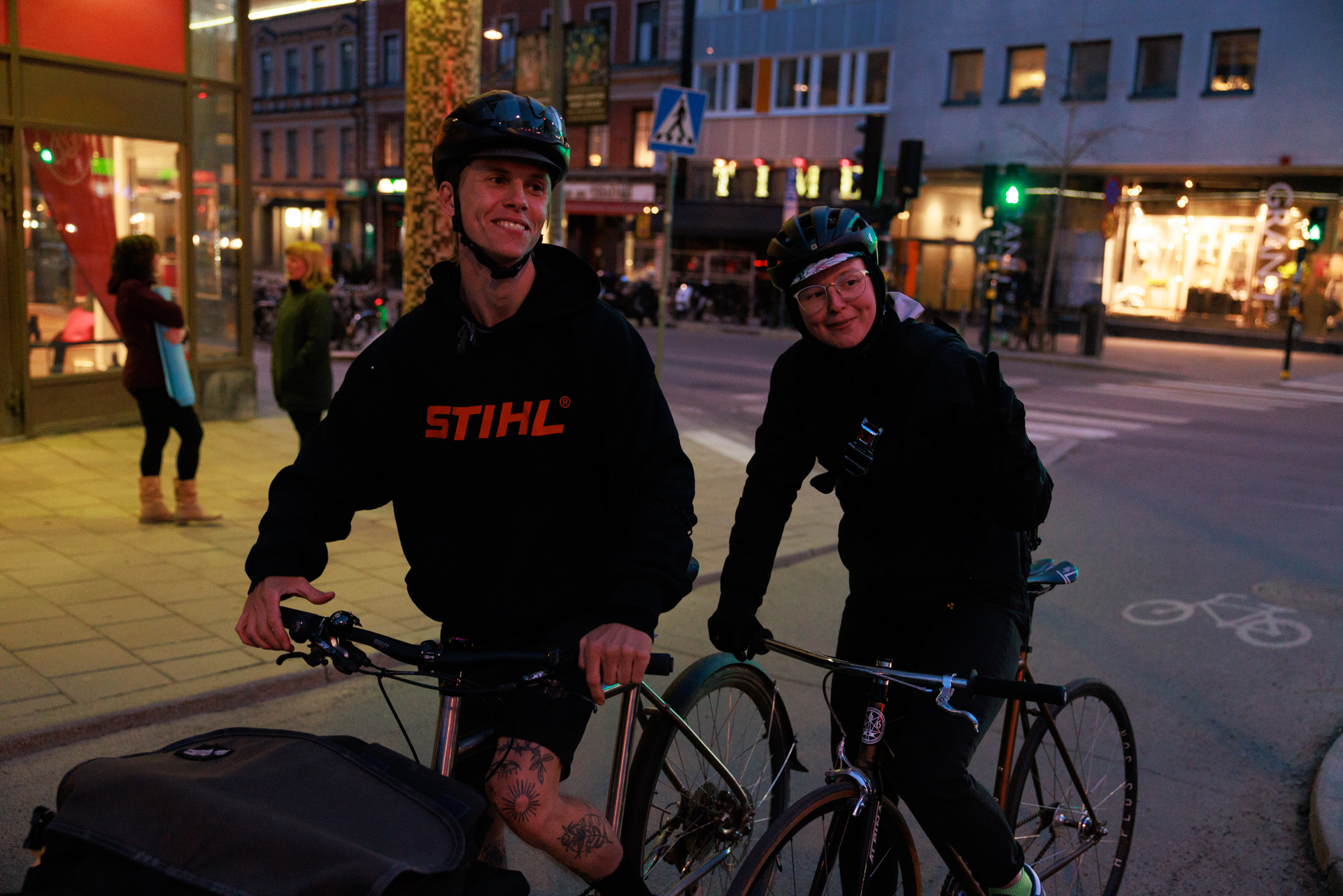
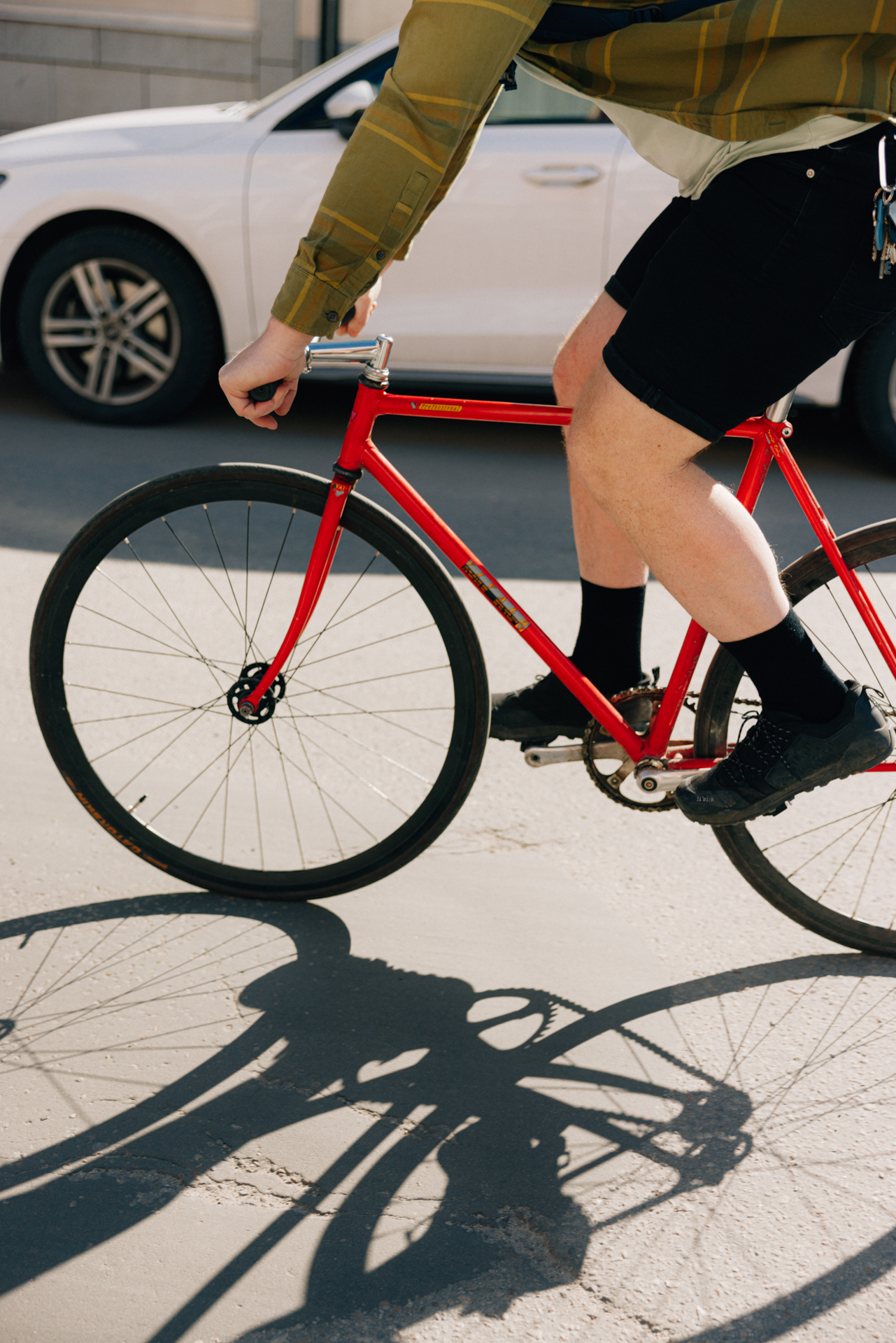
Thanks again for having me in Stockholm! And special thanks to Vedran for kindly lending me his Omnium cargo for a week.
Latest posts
- In Stockholm with Lorenza WalkerA conversation with multidisciplinary artist and cyclist Lorenza Walker. Following her for a week in Stockholm to learn more about her creative process.
- It’s always a good time in ItalyA story about a bikepacking trip in Italy where nothing went as planned, and nothing was really planned from the start.
- PlaygroundA video celebrating the good times riding with your friends, from the busy city streets to the peaceful natural environments.

